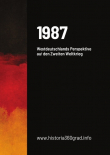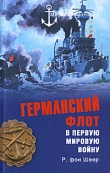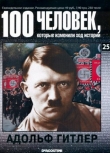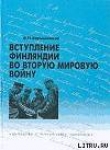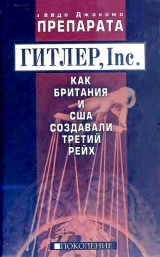
Текст книги "Гитлер, inc. Как Британия и США создавали Третий Рейх."
Автор книги: Гвидо Препарата
Жанры:
Публицистика
,сообщить о нарушении
Текущая страница: 27 (всего у книги 30 страниц)
99. Ibid., pp. 217, 312.
100. Quigley, Tragedy, p. 236.
Часть 2
1. Christopher Marlowe, The Tragedy of Doctor Faustus (New York: Washington Square Press, 1959 [1588]), pp. 26-7.
2. Volker Berghahn, Imperial Germany, 1871-1914 (Providence, RI: Berghahn Press, 1994), p. 336.
3. Sebastian Haffner, The Failure of a Revolution. Germany 1918-1919 (Chicago: Banner Press, 1986 [1969]), p. 16.
4. D. Authier and J. Barriot, La sinistra comunista in Germania (Milano: La Salamandra, 1981 [1976]), p. 40.
5. Thorstein Veblen, The Theory of the Leisure Class (New York: Penguin Books, 1979 [1899]), p. 198.
6. Ibid, p. 204.
7. Thorstein Veblen, The Vested Interests and the Common Man (The Modem Point of View and the New Order) (New York: B. W. Huebsch, Inc., 1919), p. 165.
8. Thorstein Veblen, 'The Economics of Karl Marx Il in Thorstein Veblen, The Place of Science in Modern Civilization (New York: Capricorn Books, 1969 [1907]), pp. 453-4.
9. Haffner, Failure, p. 16.
10. Ibid., p. 28.
11. Ibid., p. 57.
12. Bernhard von Bulow, 'Revolution in Berlin', in A. Kaes, M.Jay and
E. Dimendberg (eds), The Weimar Republic Sourcebook (Berkeley: University of California Press, 1994), pp. 56-7.
13. Morgan Philips Price, Dispatches from the Weimar Republic. Versailles and
German Fascism (London: Pluto Press, 1999 [1919-29]), p. 23.
14. Ernst Toller,/was a German. The Autobiography of Ernst Toller (New-York: William Morrow and Company, 1934), pp. 141-2.
15. Klaus Epstein, Matthias Erzberger and the Dilemma of German Democracy
(Princeton: Princeton University Press, 1959), pp. 274-82.
16. Adolf Hitler, Mein Kampf (Boston: Houghton Mifflin Company, 1971
[1925]), pp. 204-6.
17. George F. Kennan, Russia and the West under Lenin and Stalin (Boston: Little, Brown & Co., 1960), p. 155.
18. Tacitus, Agricola, Germania, Dialogus (Cambridge, MA: Harvard University Press, Loeb Classical Library, 1992 [98 AD]), p. 152.
19. Kennan, Russia, p. 158.
20. Ernst Jiinger, Tire' (1922), in Kaes et al., Weimar Sourcebook, p. 19.
21. Ernst Von Salomon, Iproscritti (Die Gedchteten) (Parma: Edizioni all'in-
segna del veltro, 1979 [1930]), p. 49.
22. Ibid., pp. 36-40, 86.
23. Haffner, Failure, p. 161.
24. Freya Eisner, Kurt Eisner: die Politik des libertaren Sozialismus
(Frankfurt am Main: Suhrkamp Verlag, 1979), p. 110.
/ ♦ / 1
25. I. Benoist-Mechin, Histoire de Farmee allemande (Paris: Editions Albin Michel, 1966), Vol. 1, p. 270.
26. Rudolf Von Sebottendorff, Prima che Hitler venisse. Storia della Societd
Thule Bevor Hitler kam) (Torino: Edizioni Delta-Arktos, 1987 [1933]), pp. 73-143.
27. Eugene Lunn, Prophet of Community. The Romantic Socialism of Gustav
Landauer (Berkeley: University of California Press, 1973), p. 331. Густав Ландауэр проводил свои реформы, будучи уполномоченным по просвещению и народному образованию. Сильвио Гезелль, бывший бизнесмен, ставший гуру анархистов и реформатором денежного обращения и назначенный Мюнхенским советом министром финансов, получил возможность провести в жизнь свои предложения и начал печатать деньги (бумажные сертификаты с определённым сроком годности). (Silvio Gesell, The Natural Economic Order (San Antonio: Free-Economy Publishing Co., 1920, pp. 130 ff.).
28. Kennan, Russia, p. 160.
29. Walt Whitman, Leaves of Grass (New York: Penguin Books, 1986
[1855]), p. 42.
30. Von Sebottendorff, Hitler, pp. 121ff.
31. Ian Kershaw, Hitler: 1889-1936: Hubris (New York: W. W. Norton & Co.,
1998), p. 120.
«
32. Douglas Reed, Nemesi? La storia di Otto Strasser (Roma: Edizioni delle
catacombe, 1944), p. 55.
33. Kershaw, Hubris, p. 126.
34. Joachim Fest, Hitler (New York: Vintage Books, 1975 [1973]), p. 118.
35. Kershaw, Hubris, p. 140.
36. Benoist-Mechin, Armee allemande, Vol. 2, pp. 225-6.
37. Gustav Meyrink, The Golem (Sawtry, Cambs: Dedalus, 1995 [1915]), p. 59.
38. Jean-Michel Angebert, The Occult and the Reich. The Mystical Origins of
Nazism and the Search for the Holy Grail (New York: Macmillan Publishing, 1974 [1971]), p. 165.
39. Fest, Hitler, p. 116, and Rene Alleau, Hitler et les societes secretes.
^ 1 9
Enquete sur les sources occultes du nazisme (Paris: Editions Bernard Grasset, 1969), p. 139.
40. Nicholas Goodrick-Clarke, The Occult Roots of Nazism. Secret Aryan Cults
and Their Influence on Nazi Ideology (New York: New York University Press, 1985)| p. 151.
41. Werner Gerson, Le Nazisme societe secrete (Paris: J'ai lu, 1969),
pp. 176-7.
42. Ernst Jiinger, Das abenteurlicfie Herz. Figuren und Capriccios (Hamburg:
Hanseatische Verlaganstalt, 1938), pp. 75-6.
43. Kershaw, Hubris, p. 155.
44. Jiinger, Herz, p. 66.
45. Dietrich Eckart, 'Jewishness In and Around Us: Fundamental
Reflections', in B. Miller Lane and L. Rupp (eds), Nazi Ideology Before 1933. A Documentation (Austin: University of Texas Press, 1978 [1919]), pp. 23-5.
46. Von Sebottendorff, Hitler, p. 55.
47. Ibid., p. 208.
48. Goodrick-Clarke, Occult Roots, p. 152.
49. Ernst Jiinger, On the Marble Cliffs (Norfolk, CT: New Directions, 1947
[1939]), p. 28.
50. N. Gordon-Levin Jr., Woodmw Wilson and World Politics. America's Response
to War and Revolution (Oxford: Oxford University Press, 1968), pp. 91-5.
51. Ibid., p. 219.
52. Angiolo Forzoni, Rublo. Storia civile e monetaria delle Russia da Ivan a
Stalin (Roma: Valerio Levi Editore, 1991), p. 342.
53. Richard Pipes, A Concise History of the Russian Revolution (New York:
Vintage Books, 1995), p. 235.
54. Gordon-Levin, Woodmw Wilson, pp. 78-80.
55. Peter Fleming, The Fate of Admiral Kolchak (New York: Harcourt, Brace
& World, Inc., 1963), p. 49.
56. Ibid., p. 51.
57. George Stewart, The White Armies of Russia: A Chronicle of Counter-
Revolution and Allied Intervention (New York: Macmillan Company, 1933), pp. 83-91.
58. Pipes, Concise History, p. 92.
59. Stewart, White Armies, pp. 137-8.
60. Kennan, Russia, p. 108.
61. Stewart, White Armies, pp. 135-6.
62. В Сибирь Британия, Франция и Италия отправили 1400, 1400 и 1200 солдат, соответственно, (ibid., р. 226).
63. Jonathan Smele, Civil War in Siberia. The Anti-Bolshevik Government of
Admiral Kolchak, 1918-1920 (Cambridge: Cambridge University Press, 1996), pp. 72, 97-9, 418.
64. Stewart, White Armies, p. 153.
65. Richard Luckett, The White Generals. An Account of tfie White Movement in
Russia and the Russian Civil War (New York: Viking Press, 1971), p. 231.
66. Pipes, Concise History, p. 235.
67. «Не должно быть никаких попыток покорить большевистскую Россию силой оружия... Не надо использовать антибольшевистские армии для реставрации старого царского режима... [и] возложения на крестьян старых феодальных повинностей [!], в условиях которых они владели землёй...» (Lloyd George, quoted in ibid., p. 250).
68. Carroll Quigley, Tragedy and Hope. A History of the World in Our Time (New
York: Macmillan Company, 1966), p. 261.
69. Наибольших успехов в борьбе с Советами Белое движение добилось в сентябре 1919 года.
70. Stewart, White Armies, p. 166.
71. Pipes, Concise History, p. 252.
72. Leon Degrelle, Hitler: Born at Versailles (Cosla Mesa; Institute lor
Historical Review, 1987), p. 430.
73. Stewart, White Armies, p. 173.
74. Luckett, White Generals, p. 257.
75. Stewart, White Armies, p. 162.
76. Gordon-Levin, Woodrow Wilson, p. 224.
77. Geminello Alvi, DeVestremo occidente. II secoh americano in Europa. Storie
economiche (Firenze: Marco Nardi Editore, 1993), p. 158.
78. Smele, Civil War, pp. 419-20.
79. Luckett, White Generals, p. 226.
80. Stewart, White Armies, p. 296.
81. Ibid., p. 286.
82. Ibid., p. 314.
83. Smele, Civil War, p. 201.'
84. Niall Ferguson, The Pity of War (New York: Basic Books, 1999), p. 337.
85. Margaret Macmillan, Paris 1919. Six Months that Changed the World (New York: Random House, 2002), p. 222.
86. Stewart, White Armies, p. 243.
87. Forzoni, Rublo, p. 342.
88. Fleming, Kolchak, p. 71.
89. Как это, например, делал Анвар Садат, заместитель Насера, позже ставший президентом Египта, говоря так об СССР всякий раз, когда в геополитическом анализе упоминали мнимую враждебность России (John К. Cooley, Unholy Wars. Afghanistan, America and International Terrorism (London: Pluto Press, 2000), p. 33).
90. Gordon-Levin, Woodmw Wilson, p. 231.
91. Ibid., p. 230.
92. Pipes, Concise Histoiy, p. 250.
93. Ibid., p. 270.
94. Ibid., p. 250.
95. R. H. Bruce Lockart, British Agent (London: G. P. Putnam & Sons,
1933), p. 222.
96. Anthony Sutton, Wall Street and the Bolshevik Revolution (New Rochelle,
NY: Arlington House Publishers, 1981), p. 158.
97. Edward Jay Epstein, Dossier: The Secret Story of Armand Hammer (New
York: Random House, 1996), pp. 45-85.
98. Giovanni Preziosi, Giudaismo, bolscevismo, plutocrazia e massoneria
(Torino: Ainoldo Mondadori, 1941), p. 127.
99. Kennan, Russia, p. 113.
100. Ibid., pp. 117-18.
101. John Maynard Keynes, The Economic Consequences of the Peace (New
York: Penguin Books, 1995 [19201), p. 153.
102. Ibid., p. 165.
103. Macmillan, Paris 1919, p. 181.
104. Ibid., p. 192.
105. Charles L. Mee Jr., The End of Order, Versailles 1919 (New York:
E. P. Dutton, 1980), pp. 209-210.
106. Quigley, Tragedy, p. 272.
107. Ibid.
108. Macmillan, Paris 1919, p. 466.
109. Ibid., p. 472.
110. Epstein, Erzberger, p. 323.
111. Quigley, Tragedy, p. 277.
112. Bernhard von Billow, Ij> memorie del Principe di Billow. Volume HI 1901-
1920 (Milano: Ainoldo Mondadori, 1931), p. 322.
113. Один миллион немцев остался в Польше, три миллиона в Чехо-
словакии, по полмиллиона в Венгрии и Югославии и 700 тысяч
в Румынии (Quigley, Tragedy, p. 280).
114. Hans Mommsen, The Rise & Fall of the Weimar Democracy (Chapel Hill:
University of North Carolina Press, 1989), p. 110.
115. Mee, End of Order, p. 222.
116. Keynes, Economic Consequences, p. 146.
117. Erich Eyck, Storia delta repubblica di Weimar, 1918-1933 (Geschichte der
weimarer Republik) (Torino: Giulio Einaudi Editore, 1966 [1956]), p. 131.
118. Keynes, Economic Consequences, p. 200.
119. Mee, End of Order, p. 256.
120. Keynes, Economic Consequences, pp. 289-90, 294.
121. Ibid., pp. 296-7.
122. AM, Occidente, p. 141.
123. Keynes, Economic Consequences, pp. 269.
124. Graham Hutton, Is it Peace? (New York: Macmillan Company, 1937),
pp. 73-4.
125. Hamilton Armstrong, Peace and Counterpeace. From Wilson to Hitler (New
York: Harper & Row Publishers, 1971), p. 98.
126. Thorstein Veblen, Imperial Germany and the Industrial Revolution
(London: Macmillan 8c Co., 1915), p. 69.
127. E. W. Jorgensen and H. I. Jorgensen, Thorstein Veblen. Victorian
Firebrand (Armonk, NY: M. E. Sharpe, 1999), p. 149.
128. Thorstein Veblen, The Nature of Peace and the Terms of its Perpetuation
(New Brunswick: Transaction Books, 1998 [1917]) p. 277.
129. Veblen, Imperial Germany, pp. 54-5.
130. Ibid., p. 58, emphasis added.
131. Jorgensen and Jorgensen, Thorstein Veblen, p. 150.
132. Veblen, Nature of Peace, p. 142.
133. Ibid., p. 150.
134. Ibid., p. 270.
135. Ibid., p. 280
136. Ibid., p. 295.
137. Thorstein Veblen, The Engineers and the Price System (New York:
Harcourt, Brace & World, Inc., 1963 [1921]).
138. Thorstein Veblen, 'Bolshevism is a Menace – to Whom?' (1919), in
Thorstein Veblen, Essays in Our Changing Order (New York: Augustus M. Kelley, 1964), p. 400.
139. Thorstein Veblen, 'The Economic Consequences of the Peace*
(1920), in Veblen, Essays, pp. 462-3; emphasis added.
140. Ibid., p. 466.
141. Ibid., p. 468; emphasis added.
142. Ibid., p. 469; emphasis added.
143. Ibid.
144. Ibid., p. 470.
145. Quigley, Tragedy, p. 312.
146. Veblen, 'Economic Consequences', p. 470.
147. Gerald Feldman, The Great Disorder. Politics, Economics and Society in the
German Inflation, 1914-1924 (Oxford: Oxford University Press, 1997), p. 148.
Часть 3
1. Friedrich Holderlin, Hyperion, Empedokles (Weimar: Erich Liechenstein Verlag, 1922 [1799]), p. 207.
2. Friedrich Holderlin, Hymns and Fragments (trans. Richard Siebuhr) (Princeton: Princeton University Press, 1984 [1801-06]), pp. 61-3.
3. Carroll Quigley, Tragedy and Hope. A History of the World in Our Time (New York: Macmillan Company, 1966), p. 418.
4. Peter Gay, Weimar Culture. The Insider as Outsider (New York: W. W. Norton & Company, 2001), pp. 1-2.
/ / *
5. I. Benoist-Mechin, Histoire de l'armee allemande, (Paris: Editions Albin Michel, 1966) Vol. 3, p. 105.
6. Harry Kessler, Rathenau (Bologna: II Mulino, 1995 [1928]), p. 314.
7. George Kennan, Russia and the West under Lenin and Stalin (Boston: Little, Brown 8c Co., 1960), p. 203.
8. Quigley, Tragedy, p. 422.
9. Arthur Moeller van den Bruck, II Terzo Reich (Das dritte Reich) (Roma: Edizioni Settimo Sigillo, 2000 [1923]), p. 152.
10. D.J. Goodspeed, Ludendorff. Soldier, Dictator, Revolutionary (London: Rupert Hart-Davis, 1966), pp. 223-4.
11. Paul von Hindenburg, The Stab in the Back', in A. Kaes, M.Jay and E. Dimendberg (eds), The Weimar Republic Sourcebook (Berkeley: University of California Press, 1994), p. 15.
12. Klaus Epstein, Matthias Erzberger and the Dilemma of German Democracy
(Princeton: Princeton University Press, 1959), p. 54.
13. Ibid., p. 323.
14. F. W. Henning, Das industrialisierte Deutschland 1914 bis 1972
(Paderborn: Ferdinand Schoningh, 1974), pp. 42-3.
15. Matthias Erzberger, Reden zu Neuordnung des deutschen Finanzwesens
(Berlin: Verlag von Reimar Hobbing, 1919), pp. 4-6.
16. Ludwig Holtfrerich, Einflazione tedesca 1914-1923 (Die deutsche Inflation) (Bari: Laterza, 1989 [1980]), p. 280.
17. Epstein, Erzberger, pp. 336-43.
18. Costantino Bresciani-Turroni, The Economics of Inflation (New York: Augustus M. Kelley Publishers, 1968 [1931]), p. 55.
19. Ibid., pp. 357-9.
20. Johannes Erger, Der Kapp-Luttwitz Putsch. Bin Beitrag zur deutschen
Innenpolitik. (Dusseldorf: Droste Verlag, 1967), p. 77.
21. Ibid., p. 78.
22. Epstein, Erzberger, p. 342.
23. Erich Eyck, Storia delta repubblica di Weimar, 1918-1933 (Geschichte der
Weimarer Republik) (Torino: Giulo Einaudi Editore, 1966 [1956]), p. 152.
24. Epstein, Erzberger, p. 367.
25. Ernst Troeltsch, La democrazia improvvisata, la Germania dal 1918 al 1922
(Napoli: Guida Editori, 1977 [1924]), p. 111.
26. Arthur Rosenberg, Storia della repubblica tedesca (Deutsche
Republik) (Roma: Edizioni Leonardo, 1945 [1934]), pp. 99-100.
27. Edward Hallett Carr, The Bolshevik Revolution 1917-1923, Vol. 3
(London: Macmillan 8c Co. Ltd., 1953), p. 310.
28. Eyck, Weimar, p. 150.
29. Morgan Philips Price, Dispatches from the Weimar Republic. Versailles
and German Fascism (London: Pluto Press, 1999 [1919-29]), p. 66.
30. Erger, Kapp-Luttwitz Putsch, p. 41.
31. Ibid., p. 42.
32. Erwin Konnemann, 'Kapp-Putsch gegen die weimarer Republik. Ein
Spiel mit den Roten und den weissen Russen ', in Der Tagesspiel (March 14, 2000), p. 2.
33. E.J. Feuchtwanger, From Weimar to Hitler. Germany, 1918-1933 (New
York: St. Martin's Press, 1995), p. 73.
34. Konnemann, 'Kapp-Putsch', p. 2.
35. Bernard Wasserstein, The Secret Lives of Trebitsch-Lincoln (New York:
Penguin Books, 1988), chapters 1-8.
36. Ibid.
37. Werner Gerson, Le Nazisme socie'te secrete (Paris: J'ai lu), p. 278.
Donald McCormick, The Mask of Merlin. A Critical Study of David Lloyd George (London: Macdonald, 1963), p. 75.
39. Ibid., p. 80.
40. Wasserstein, The Secret Lives, p. 343.
41. Maurice Laporte, Bouddha contre rintelligence Service (Paris: Alexis
Redier Editeur, 1933), p. 82.
42. Imre GyomaT, Trebitsch-Lincoln. Le plus grand aventurier du siecle
(Paris: Les Editions de France, 1939), p. 100.
43. Wasserstein, The Secret Lives, p. 148.
44. Laporte, Bouddha, p. 82.
45. Felix Gross, / Knew Those Spies (London: Hurst 8c Blackett, 1940),
pp. 81-2.
46. Wasserstein, The Secret Lives, pp. 155, 166.
47. David Lampe and Lazlo Szenasi, The Self-made Villain. A Biography of
I. T Trebitsch-Lincoln (London: Cassell, 1961), p. 110.
48. Wasserstein, The Secret Lives, p. 336.
49. Sidney T. Felstead, German Spies at Bay. Being an Actual Record of the
German Espionage in Great Britain during the Years 1914-1918 (Compiled from Official Sources) (London: Hutchinson 8c Co., 1920), p. 61.
50. Wasserstein, The Secret Lives, p. 166, and GyomaT, Trebitsch,
pp. 150-151.
51. Louis Dupeux, National-Bolclievisme en Allemagne, sous la Republique de
Weimar (1919-1933) (Paris: Librairie Honore Champion, 1974), p. 147.
52. Ibid., p. 148.
53. Erger, Kapp-Luttwitz Putsch, p. 105.
54. Konemann, 1 Kapp-Putscti, p. 5.
55. Benoist-Mechin, Armee allemande, Vol. 2, pp. 79-81.
56. Konnemann, Kapp-Putsch', p. 6.
57. John Wheeler-Bennett, The Nemesis of Power. The German Army in Politics
1918-1945 (London: Macmillan 8c Co., 1961), p. 73.
58. Alex De Jonge, The Weimar Chronicle. Prelude to Hitler (New York: Meridian Books, 1978), p. 64.
59. Benoist-Mechin, Armee allemande, Vol. 2, p. 96.
60. Wheeler-Bennett, Nemesis of Power, p. 76.
61. Anton Golecki (ed.), DasKabinett Bauer (21 Juni 1919bis 27Marz 1920).
Akten der Reichkanzlei weimarer Republik (Boppard am Rhein: Harald Boldt Verlag, 1980), p. 687.
62. Heinrich August Winkler, La repubblica di Weimar, 1918-1933: storia della
prima repubblica tedesca (Roma: Donzelli Editore, 1998 [1993]), p. 135
63. Carr, Bolshevik Revolution, p. 172.
64. Hagen Schulze, La repubblica di Weimar, la Germania dal 1918 al 1933
(Weimar, Deutschland 1918-1933) (Bologna: II Mulino, 1993 [1983]), pp. 262-3.
65. Wasserstein, The Secret Lives, p. 185.
66. Ian Kershaw, Hitler: 1889-1936: Hubris (New York: W. W. Norton & Co.,
1998), p. 153.
67. Gerson, Nazisme, p. 84.
68. Wasserstein, The Secret Lives, p. 186.
69. Ibid., p. 189.
70. Feuchtwanger, From Weimar to Hitler, p. 77.
71. Rosenberg, Republica tedesca, p. 117.
72. L. Riddell, Intimate Diary of the Peace Conference and After, 1918-1923
(New York: Reynal & Hitchcock, 1934), p. 177.
73. Lampe and Szenasi, Self-made Villain, p. 139.
74. Gerson, Nazisme, p. 83.
75. Dupeux, National-Bokhevisme, p. 129.
76. Benito Mussolini, Opera omnia, Vol. XIV (1919-1920) (Firenze: La Fenice,
1954), pp. 374-5.
77. Dupeux, National-Bokhevisme, p. 150.
78. Wasserstein, The Secret Lives, p. 182.
79. Sigrid Schultz, Germany Will Try It Again (New York: Reynal & Hitchcock, 1944), pp. 58-9.
80. Carr, Bolshevik Revolution, p. 160.
81. Dupeux, National-Bokhevisme, p. 149.
82. Wasserstein, T he Secret Lives, p. 191.
83. Ibid., p. 183.
84. David Stafford, Churchill and the Secret Service (New York: Overlook Press,
1999), p. 24.
85. Riddel, Intimate Diary, p. 177.
86. Dupeux, National-Bokhevisme, p. 168.
87. Ibid., p. 157.
88. Lampe and Szenasi, Self-made Villain, p. 148.
89. Ibid., p. 166, and Wasserstein, The Secret Lives, p. 324.
90. Kershaw, Hubris, p. 140.
91. Epstein, Erzberger, p. 387.
92. Quigley, Tragedy, p. 305.
93. Gerald Feldman, The Great Disorder. Politics, Economics and Society in the
German Inflation, 1914-1924 (Oxford: Oxford University Press, 1997), p. 400.
94. Geminello Alvi, DelVrestremo occidente. Ilsecolo americano in Europa. Storie
economiche (Firenze: Marco Nardi Editore, 1993), p. 177.
95. Quigley, Tragedy, p. 306.
96. Holtfrerich, Inflation, p. 128.
97. Feldman, Great Disorder, p. 449.
98. Alvi, Occidente, p. 175.
99. Feldman, Great Disorder, p. 333.
100. Robert Musil, The Man Without Qualities (Der Mann ohne Eigenschaften)
(New York: Vintage boob, 1995 [1930-52]), p. 206.
101. Feldman, Great Disorder, p. 345.
102. Kessler, Rathenau, p. 275.
103. Benoist-Mechin, Armee allemande, Vol. 2, p. 208.
104. Musil, Man Without Qualities, p. 203.
105. Quigley, Tragedy, pp. 231, 235, and Kessler, Rathenau, p. 169.
106. Walther Rathenau, In Days to Come (Von kommenden Dingen) (London:
George Allen & Unwin, 1921 [1917]), p. 158.
107. Kennan, Russia, p. 212.
108. Ibid., p. 213.
109. Ibid., p. 219.
110. Kessler, Rathenau, p. 303.
111. Ibid., pp. 280, 305, 306.
112. Von Salomon, Die Geachteten, p. 234.
113. Ibid., 176.
114. Ibid., p. 242.
115. Benoist-Mechin, Armee allemande, Vol. 2, p. 214.
116. Ibid., p. 217.
117. Von Salomon, Die Geachteten, p. 249.
118. Richard Hanser, Putsch! (New York: Pyramid Books, 1970), p. 256.
119. Ibid., p. 257.
120. Ernst von Salomon, The Answers of Ernst von Salomon. The 131 Questions
in the Allied Military Government. Eragebogen1 (London: Putnam, 1954 [1951]), p. 56.
121. Hanser, Putsch!, p. 259.
122. Hebert Helbig, Die Trtiger der Rap alio Vertrag (Gottingen: Vandenhoeck
& Ruprecht, 1958), p. 123.
123. Carr, Bolshevik Revolution, pp. 310-11.
124. Cecil F. Melville, The Russian Face of Germany (London: Wishart & Co.,
1932), pp. 86-97, and Hans W. Gatzke, 'Russo-German Military Collaboration During the Weimar Republic', in H. W. Gatzke (ed.), European Diplomacy Between Two Wars, 1919-1933 (Chicago: Quadrangle Books, 1972), pp. 50-4.
125. Walther Goerlitz, History of the German General Staff 1657-1945 (New
York: Frederick A. Praeger Publishers, 1962), pp. 231-3.
126. Quigley, Tragedy, p. 425.
127. Stephanie Salzmann, Great Britain, Germany and the Soviet Union. Rapallo
and After, 1922-1934 (Woodbridge, Suffolk: Boydell Press, 2003), p. 21.
128. Gatzke, 'Russo-German Military Collaboration', p. 59.
129. Rosenberg, Republica tedesca, p. 126.
130. Benoit-Mechin, Armee allemande, Vol. 2, p. 205, and Andre Fourgeaud,
La depreciation et la revalorisation du Mark allemand, et les enseignements de I'experience monetarire allemande (Paris: Payot, 1926), p. 11.
131. Max Hermant, Les paradoxes economiques de VAllemagne moderne
1918-1931 (Paris: Librarie Armand Collin, 1931), pp. 31-3.
132. Holtfrerich, Inflation, p. 14.
133. Ibid., p. 149.
134. Quigley, Tragedy, p. 307.
135. Rosenberg, Republica tedesca, p. 152.
136. Bresciani-Turroni, Inflation, p. 329.
137. Rosenberg, Republica tedesca, p. 155.
138. Fritz K. Ringer, The German Inflation of 1923 (New York: Oxford
University Press, 1969), p. 94; emphasis added.
139. Viscount DAbernon, The Diary of an Ambassador (New York: Double-day, Doran 8c Company Inc., 1929), p. 329; emphasis added.
140. Holtfrerich, Inflation, p. 132.
141. F. D. Graham, Exchange, Prices and Production in Hyper-Inflation
Germany, 1920-1923 (Princeton: Princeton University Press, 1930), pp. 52ff.
142. Fourgeaud, Depreciation, pp. 93-4.
143. Germany's GDP in 1923, in terms of 1913 prices, was 34,9 billion
marks; $2 billion correspond, at the rate of 4,2 marks per dollar, to approximately 9 billion marks, that is, 25 percent of 1923 GDP.
144. Fourgeaud, Depreciation, pp. 94-6.
145. Jan Van Zanden, The Economic History of the Netherlands, 1914-1995
(London: Routledge, 1997), pp. 102-4.
146. Ibid., p. 118.
147. Bresciani-Turroni, Inflation, p. 58.
148. Fourgeaud, Depreciation, p. 13.
149. Alvi, Occidente, p. 181, and Hermant, Paradoxes, pp. 54-5.
150. Holtfrerich, Inflation, pp. 290-5.
151. Hermann Jacques, Allemagne, societe a responsabilitee limitee (Paris:
Editions de la revue mondiale, 1932), pp. 118, 141.
152. Riddell, Intimate Diary, p. 40.
153. Причины уничтожения германских финансов можно уяснить исходя из следующих статистических данных:
Таб л и ца
Инфляционное расплавление германской валюты
Год | Возмещение | Проценты | Обслуживание | Расходы | Рост | |||||||
фундирован- | по государ- | процентов + | государства | объёма | ||||||||
ного долга | ственному | выплаты | учётных | (Брешиани- | ||||||||
(Грэхем) | долгу | по долгам | векселей | Туррони) | ||||||||
(Хеннинг) | (Хеннинг) | |||||||||||
1919 | — | 10,4 | 10,4 | 54,9 | 31,2 | |||||||
1920 | 10,8 | 36,2 | 47,0 | 145,3 | 66,4 | |||||||
1921 | 20,0 | 30,0 | 50,0 | 298,8 | 94,3 | |||||||
1922 | 23,0 | 33,0 | 56,0 | 327,9 | 1247,9 | |||||||
Всё цифры приведены в миллиардах марок по текущему курсу того времени. Данные в первой колонке получены умножением величины стоимости золотых марок (Graham, Hyper-Inflation, pp. 40-1, Table IV) на среднегодовой обменный курс золотой марки, выраженный в бумажных марках (Bresciani-Turroni, Inflation, p. 441). В 1922 году было возмещено дополнительных 23 миллиарда марок отсроченного долга, но к этому времени инфляция превратила этот последний взнос в ничто. Итак, за период с 1920 по 1922 год 50 процентов Kriegsan lei he были превращены в наличные деньги. Цифры во второй и четвёртой колонках взяты из двух наборов данных, приведённых Хеннингом (Industrialisierte Deutschland, pp. 59-60), в то время как суммарное изменение стоимости государственных учётных векселей, заимствованное из работы Брешиани-Туррони (Inflation, pp. 439-40), воспроизведено в пятой колонке. Данные в третьей колонке представляют собой суммы данных первой и второй колонок. После 1922 года частный сектор, который до тех пор поглощал приблизительно половину каждого выпуска государственных облигаций, начал вообще избегать правительственных ценных бумаг, предоставив рейхсбанку одному нести бремя ответственности за векселя и ценные бумаги государства, за которые en masse – расплачивалась экономика, то есть, народное хозяйство (Graham, Hyper-Inflation, pp. 60-1, и Fourgeaud, Depreciation, p. 118). В 1923 году сокращение объёма ценных бумаг государства стало определяющей чертой инфляции, и к 1923 году погашение ценных бумаг наличными деньгами превзошло объём их дисконтирования и окончательно уничтожило германскую марку. Таким образом, сумма процента и возмещённого долга (то есть выплата наличных денег по военному займу) за период между 1919 и 1920 годами (то есть 57,4 миллиарда марок – сумма данных в двух первых строках колонки 3) достигла почти 30 процентов (28,7) всех расходов государства за этот период (сумма данных в первых двух строках колонки 4) и соответствовала почти 60 процентам (58,8) общего количества созданных за этот период денег (то есть, дисконтированные Рейхсбанком ценные бумаги: 97,6 миллиарда марок: сумма данных первых двух строк колонки 5, учитывая, что никакая часть этого долга не могла быть покрыта за счёт налогов).
154. Marcel Mauss, Ecrits politiques (Paris: Librairie Artheme Fayard, 1997
[1924]), p. 665.
155. Adolf Hitler, Hitler's Secret Conversations 1941-1944 (New York: Farrar,
Straus & Young, 1953), p. 54.
156. Holtfrerich, Inflation, p. 155.
157. Quigley, Tragedy, p. 312.
158. W. G. Krivitsky, In Stalin ys Secret Service (New York: Enigma Books, 2000
[1941]), pp. 28-38.
159. Konrad Heiden, Der Fuehrer. Hitler's Rise to Power (Boston: Houghton
Mifflin Company, 1944), pp. 130-1.
160. Von Salomon, The Answers, p. 242.
161. Цитируется по книге: Louis Kilzer, ChurchiWs Deception. The Dark Secret
that Destroyed Germany (New York: Simon 8c Schuster, 1994), p. 100.
162. Hitler, Mein Kampf, (Boston: Houghton Mifflin Company, 1971
[1925]), pp. 687.
163. Claus-Ekkehard Barsch, Die politische Religion des Nationalsozialismus
(Miinchen: Wilhelm Fink Verlag, 1998), pp. 63-70.
164. Ibid., p. 90.
165. Adolf Hitler, Mein Kampf, pp. 131-43; emphasis added.
166. David Irving, The War Path: Hitler's Germany, 1933-1939 (London:
Michael Joseph, 1978), p. 56.
167. Ian Kershaw, Hubris, p. 151.
168. Arthur Moeller van den Bruck, Luomo politico (Der politische Mensch)
(Roma: Settimo Sigillo, 1997 [1918]), p. 93.
169. Paul Harrison Silfen, The Volkisch Ideology & The Roots of Nazism. The
Early Writings of Artur Moeller van den Bruck (New York: Exposition Press, 1973), p. 11.
170. Ernst Hanfstaengl, Hitler: The Missing Years (New York: Arcade
Publishing, 1994 [1957]), p. 64.
171. Alfred Rosenberg, Der My thus des 20. Jahrhunderts. Eine Wertung der seel-
isch-geistigen Gestaltenkampfe unserer Zeit (Miinchen: Honeichen-Verlag, 1934), p. 640.
172. См., например: Detlev Rose, Die Thule-Gesellschaft. Legende, Mythos, Wir-
klichkeit (Tubingen: Grabert Verlag, 1994), pp. 176-7.
173. Karl Haushofer, Weltmeere und Weltmachte. (Berlin: Zeitgeschichte
Verlag, 1937), p. 284.
174. Woodruff D. Smith, The Ideological Origins of Nazi Imperialism (Oxford:
Oxford University Press, 1986), p. 223.
175. Hitler, MeinKampf p. 610.
176. Ibid. pp. 615-19.
177. Ibid., pp. 662, 663.
178. Ibid., pp. 660-2.
179. Ibid., pp. 664.
Часть 4
1. Louis-Ferdinand Celine, Voyage au bout de la nuit (Paris: Gallimard, 1952 [1932]), p. 26.
2. Erich Kastner, Larm im Spiegel (Berlin: Deutsche Verlag-Anstalt, 1929), pp. 70, 71.
3. Erich Kastner, Fabian: The Story of a Moralist (Evanston: Northwestern University Press, 1990 [1931]), p. 44.
4. Silvio Gesell, The Natural Economic Order (San Antonio: Free Economy Publishing Co., 1920), Part I.
5. Ibid., pp. 275-8.
6. Jacques Rueff, De Faube au crepuscule. Autobiographic de Fauteur. (Paris: Librairie Plon, 1977), p. 307.
7. Webster G. Tarpley, and Anton Chaitkin, George Bush. The Unauthorized Biography (Washington DC: Executive Intelligence Review, 1992), p. 31.
8. Francis Williams, A Pattern of Rulers (London: Longman, 1965), p. 201.
9. Ibid., p. 199.
10. Ibid., p. 203.
11. Henry Clay, Lord Norman (London: Macmillan 8c Co., 1957), p. 475.
12. Williams, Pattern, p. 203.
13. Andrew Boyle, Montagu Norman (London: Cassell, 1967), p. 67.
14. Ibid., p. 85.
15. Williams, Pattern, p. 204.
16. Ibid.
17. Percy Ainold, The Bankers of London (London: Hogarth Press, 1938), pp. 9, 16-17.
18. Ibid., p. 11.
19. Boyle, Norman, pp. 129-30.
20. Ibid., p. 133.
21. Ibid., p. 131.
22. Carroll Quigley, Tragedy and Hope. A History of the World in Our Time (New
York: Macmillan Company, 1966), p. 326.
23. Boyle, Norman, pp. 133-4, 137-8; emphasis added.
24. William Adams Brown Jr., England and the New Gold Standard.
1919-1926 (New Haven: Yale University Press, 1929), p. 55.
25. Boyle, Norman, p. 217.
26. Ibid. p. 185.
27. G. Balachandran, John Bullion's Empire: Britain's Gold Problem and
India Between the Wars (Richmond, Surrey: Curzon Press, 1996), p. 64.
28. Maxwell S. Stewart, 'Silver-Its International Aspects', Foreign Policy Reports, Vol. VII, No. 13 (1931), p. 242.
29. Adams Brown, England, p. 84.
30. Balachandran, John Bullion s Empire, p. 91.
31. Ibid., p. 89.
32. Ibid., pp. 98, 100.
33. Ibid., p. 202.
34. Boyle, Norman, p. 138.
35. Stanley Lebergott, The Americans. An Economic Record (New York:
Norton 8c Co., 1984), p. 396.
36. Clay, Lord Norman, p. 129.
37. Boyle, Norman, p. 68.
38. Clay, Lord Norman, p. 135.
39. Ibid., p. 132.
40. Barry Eichengreen, Golden Fetters. The Gold Standard and the Great
Depression, 1919-1939 (New York: Oxford University Press, 1992). p. 118.
41. Charles O. Hardy, Is There Enough Gold? (Washington DC: Brookings
Institution, 1936), pp. 103, 153.
42. Ibid., p. 154.
43. Marcello De Cecco, Moneta e impero. II sistema jinanziario intern azion ale



